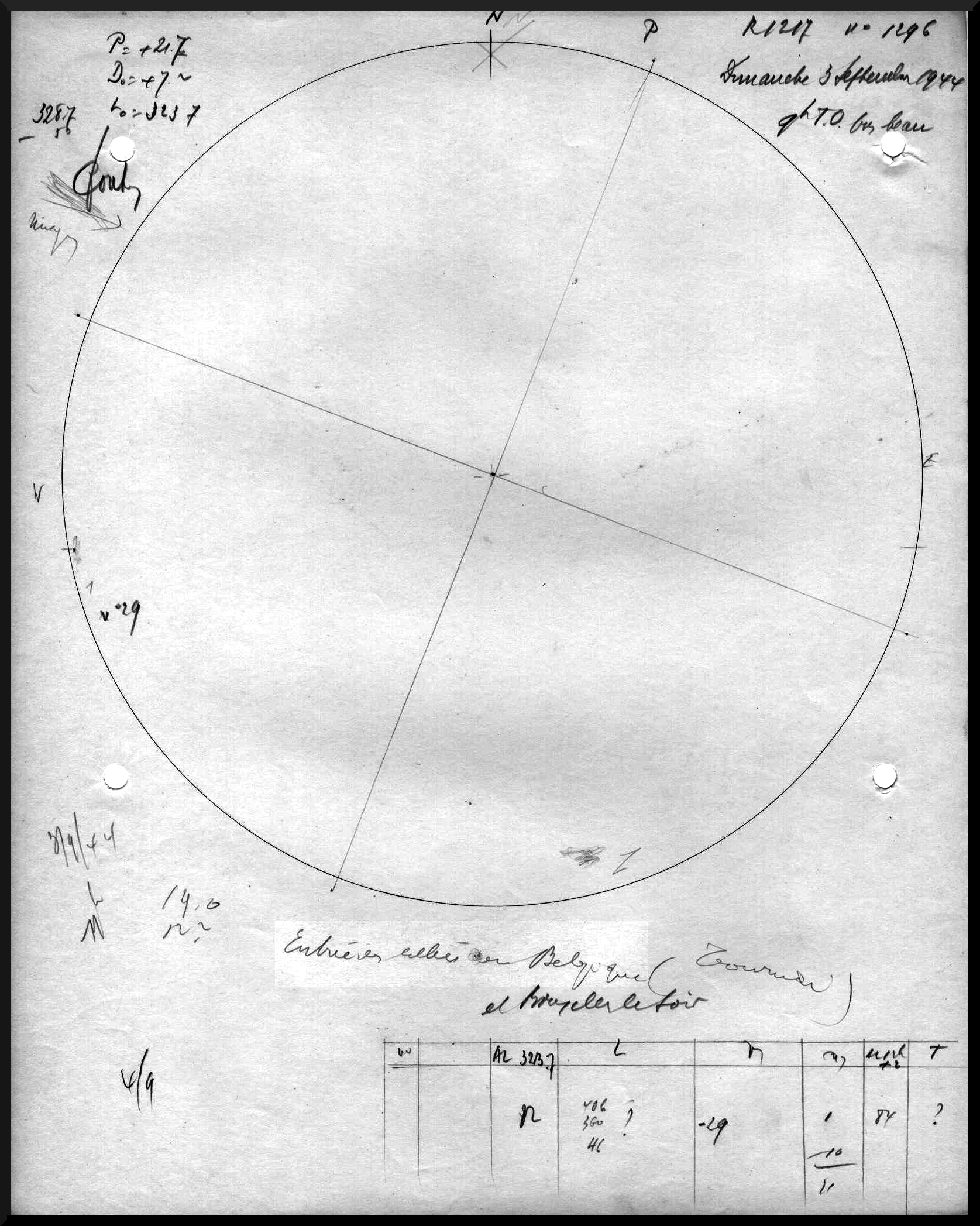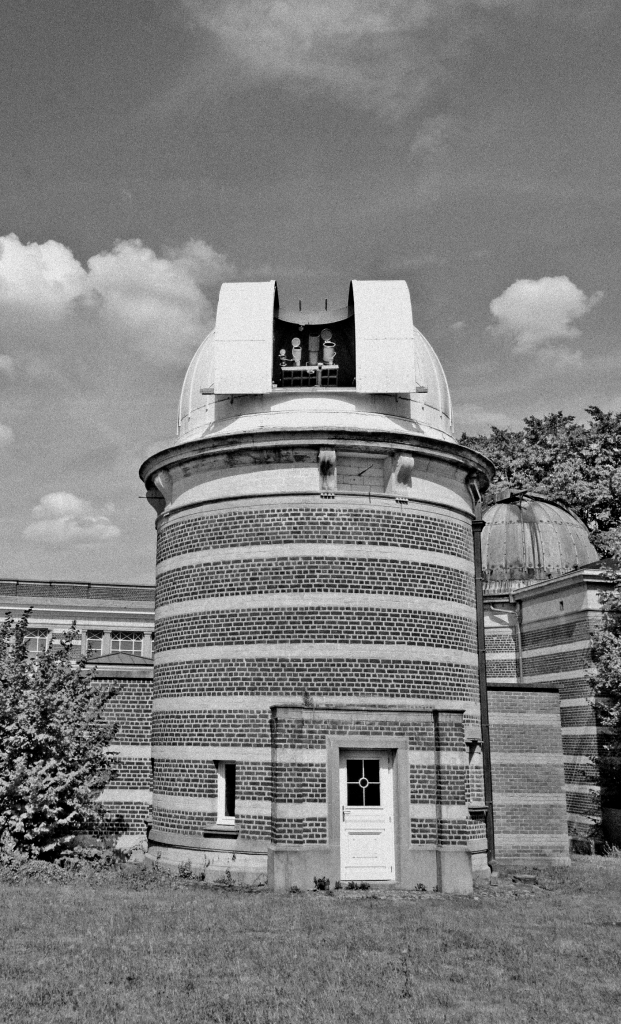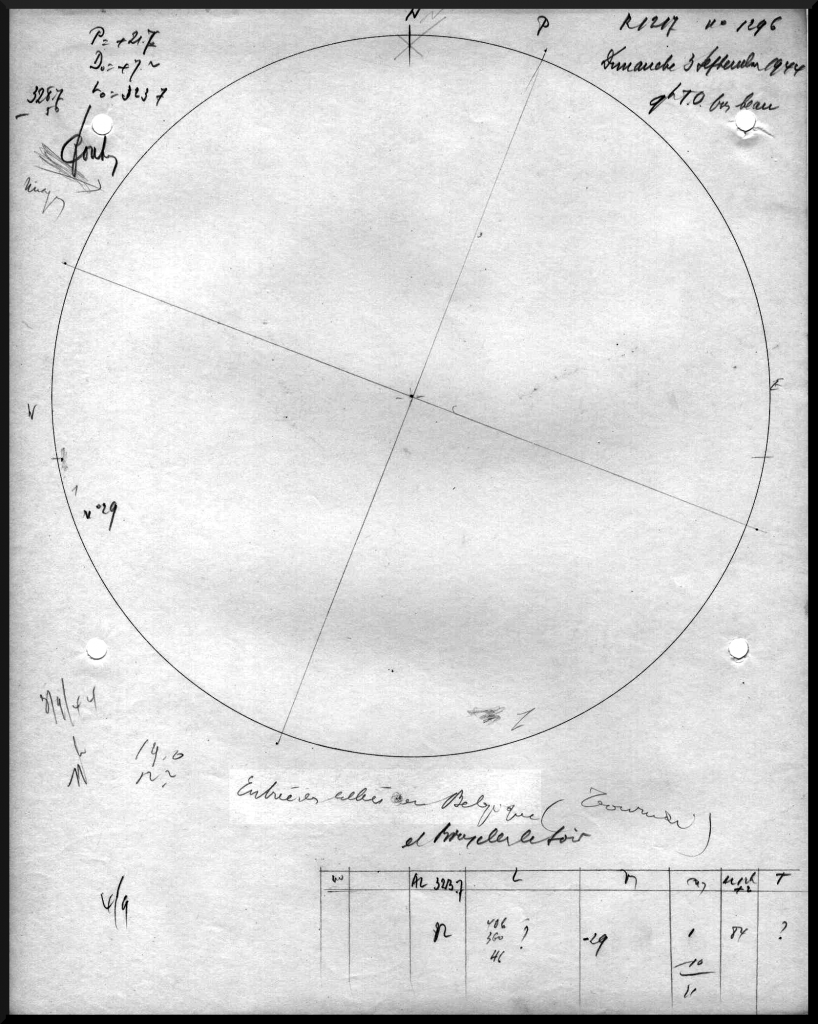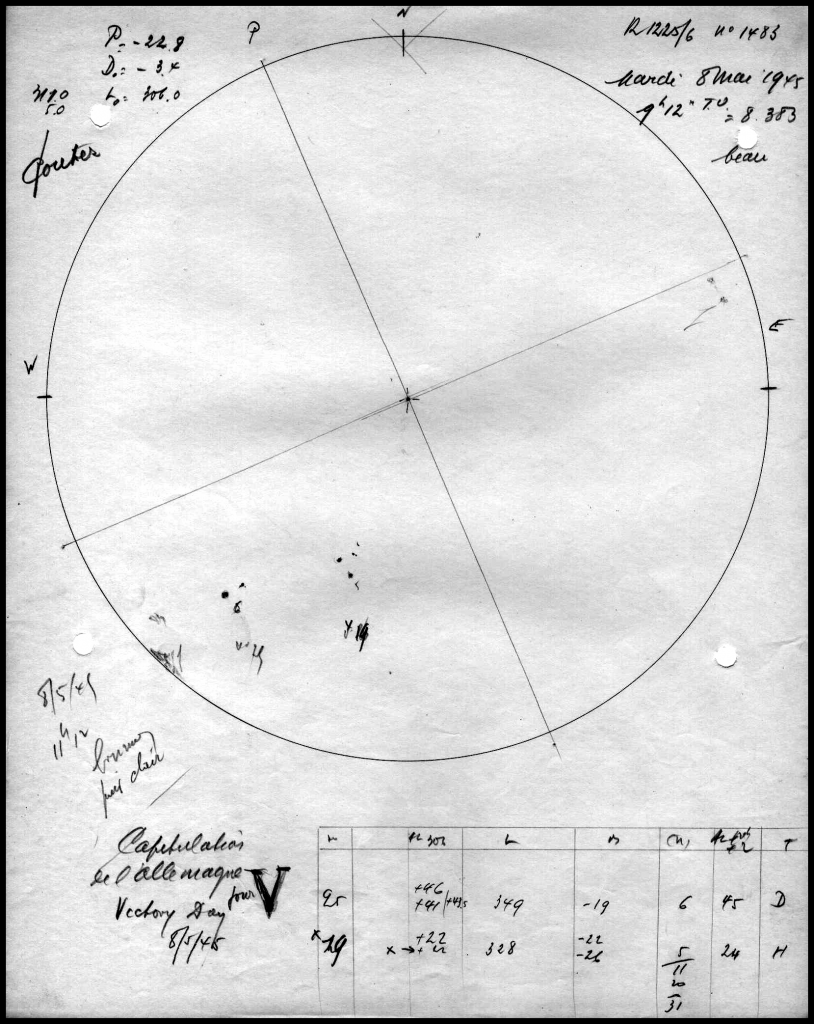The liberation of Brussels marked by the Sun’s observers
80 years ago, the Allies liberated Brussels, and this event was marked by the solar observers of the Royal Observatory of Belgium.
At the Observatory, scientific activity did not cease during the war. In particular, the daily drawing of sunspots continued since 1940. Sunspots are dark structures on the Sun’s surface indicating the emergence of magnetic fields. These can be the source of geomagnetic storms, giving rise to northern lights. Some auroras can even be seen in Belgium, like those observed in May 2024.
Exceptionally, the observer adds a note that is not related to solar activity but to historical events, such as the liberation of Brussels on September 3, 1944, with the comment “entrée des Alliés en Belgique (Tournai) et à Bruxelles le soir” (“Allied entry into Belgium (Tournai) and Brussels in the evening”), or the Allied victory on May 8, 1945, with the note “capitulation de l’Allemagne, V pour Victory Day” (“German capitulation, V for Victory Day”).
A vivid reminder of a tumultuous time when science was trying to survive.




